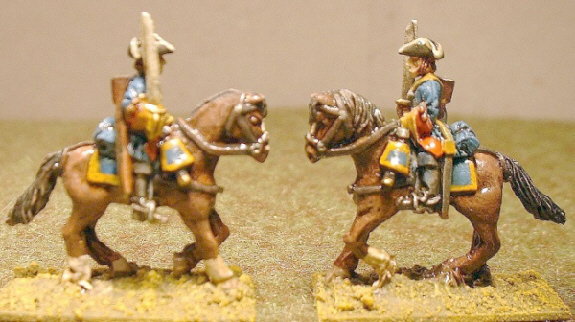
Wax museum in 1792 with the three fathers of the French Revolution, Franklin, Voltaire and Rousseau, installed at Elysium. Concerned for their revenue from visitors, the Abbey decided it needed a rival attraction for admirers of Nelson. Nelson's effigy was a pure tourist attraction, commissioned the year after his death in 1805, and his burial not in the Abbey but in St Paul's Cathedral after a government decision that major public figures should in future be buried there. The effigy of Charles II, open-eyed and standing, was displayed over his tomb until the early 19th century, when all the Westminster effigies were removed from the abbey itself. From the funeral of Charles II in 1680 they were no longer placed on the coffin but were still made for later display. The Westminster Abbey Museum in London has a collection of British royal funeral effigies made of varying materials going back to that of Edward III of England's wooden likeness (died 1377), as well as those of figures such as the naval hero Horatio Nelson, and Frances Stewart, Duchess of Richmond, who also had her parrot stuffed and displayed. After the funeral these were often displayed by the tomb or elsewhere in the church, and became a popular attraction for visitors, which it was often necessary to pay to view. In the Middle Ages it was the habit to carry the corpse, fully dressed, on top of the coffin at royal funerals, but this sometimes had unfortunate consequences in hot weather, and the custom of making an effigy in wax for this role grew, again wearing actual clothes so that only the head and hands needed wax models. The making of life-size wax figures wearing real clothes grew out of the funeral practices of European royalty. History before 1800 The funeral effigy (without clothes) of Elizabeth of York, mother of King Henry VIII, 1503, Westminster Abbey The origin of wax museums goes back to the early 18th century at least, and wax funeral effigies of royalty and some other figures exhibited by their tombs had essentially been tourist attractions well before that. Many museums or displays in historical houses that are not wax museums as such use wax figures as part of their displays. Some collections are more specialized, as, for example, collections of wax medical models once used for training medical professionals. Some wax museums have a special section dubbed the " Chamber of Horrors", in which the more grisly exhibits are displayed. Satyajit Ray at Mother's Wax Museum, Kolkata.Ī wax museum or waxworks usually consists of a collection of wax sculptures representing famous people from history and contemporary personalities exhibited in lifelike poses, wearing real clothes. A modern wax sculpture of Cecilia Cheung at Madame Tussauds Hong Kong.


For the Oswald the Lucky Rabbit short, see Wax Works. She always wore stylish clothes and jewelry and sported well-manicured nails."įuneral services for Dixon are still pending."Wax works" redirects here. The medical center said in a statement: "She never left her room without fixing her makeup and hair. She eventually started living at the Washington, D.C., VA Medical Center, where she was affectionately referred to as the "Queen Bee."

She helped get a backup of letters and packages sent to soldiers.Īfter the Army, Dixon worked for the Census Bureau and the Pentagon before retiring from government work in 1973. I am so blessed that God has left me here," Dixon said during a celebration of her 107th birthday in 2014.ĭixon joined the Women's Army Corps in 1943 and was stationed in England and France with the 6888th Battalion during World War II. "I am so blessed to be here and can understand everything at 107 years.


 0 kommentar(er)
0 kommentar(er)
